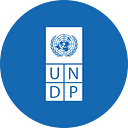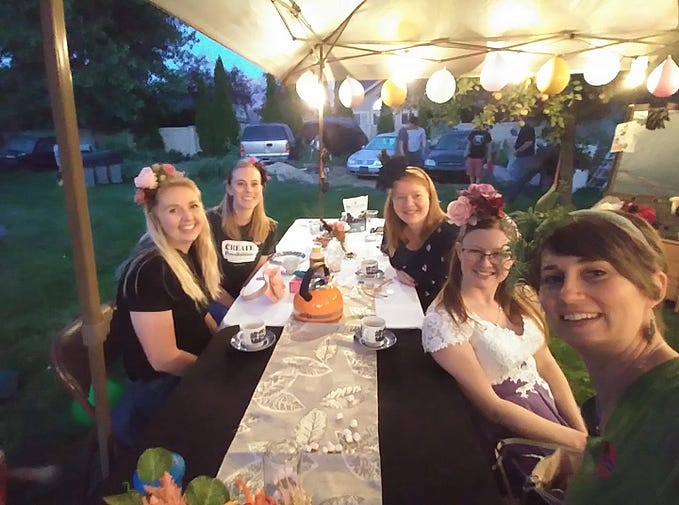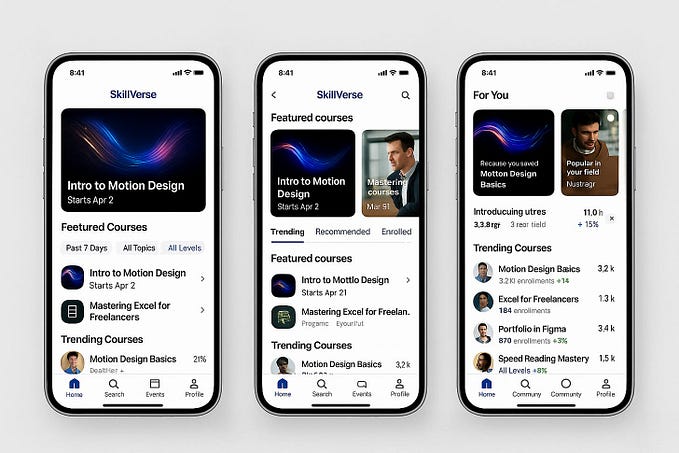We know business as usual doesn’t work. But what does the alternative look like?
An interview series with UNDP practitioners at the frontlines of portfolio practice
Amidst the ever-deepening complexity and interdependence of global development challenges, we have long witnessed the consequences of responding to wicked problems and uncertainty with systems and processes designed for stable and ordered contexts and “known knowns.” Rallying cries to “do development differently” and push against “business as usual” have become the new norm of development discourse as we reckon with the inadequacy of working through stand-alone projects that attempt to deploy single-point solutions and linear logic models to yield systemic change.
Yet the temptation to perpetuate the status quo — to continue responding to problems on the basis of what is known, where the money is, where success is assured, what we can quantify, or where power and influence draws us — remains. It is one thing to acknowledge that disruption and change is necessary. It is another to embrace the big questions and uncertainty required to bring about structural change: to experiment with alternative mental models and processes that challenge existing frameworks and assumptions for how we understand and engage with complex problems in the real world.
What does it look like to actually “do development differently” in the pursuit of systems-level transformation on our most urgent socio-economic and governance challenges? What kind of time horizons, approaches to knowledge generation, partnership models, capabilities, financing frameworks, and learning models are required? What does it feel like to work in new ways, while still operating within old systems?
In an effort to live these questions, UNDP has increasingly explored the craft of portfolio management as an emergent practice for learning new ways to comprehend, design for, and interact with social problems characterized by complexity and unpredictability. Portfolio approaches are still nascent in international development, but at the core they are based on the notion that understanding and tackling complex systemic challenges cannot be achieved by one single actor through stand-alone projects deploying single-point solutions and based on linear causal logic models. Instead, we need to collectively design and adaptively implement portfolios of interconnected synergetic interventions that allow us all to learn about and progressively figure out how to help move the needle on complex issues in the context of uncertainty and rapid change. As we look to learn from and join the growing cohort of UNDP Country Offices experimenting with portfolio approaches, the early experiences of those in the trenches may serve to demystify the practice for others.
This interview series offers a glimpse into the multi-faceted “whys,” “hows,” and “so whats” of portfolio design. It profiles the experiences of UNDP colleagues testing new ways of thinking about and responding to systemic problems through portfolio approaches: Irena Cerovic (UNDP Serbia), Eta Kelvin Ayuk (UNDP Burundi), and Agnes Chimibiri (UNDP Malawi).
Finding patterns in the process
While the pathways to design and land portfolios vary, their points of convergence offer insights into some of the motivating factors, openings, and tensions that characterize the journey. Among the patterns emerging from the experiences of early portfolio champions in UNDP, we are finding that:
- The disconnect felt between tools or thought frameworks that derive from a linear project logic, and the complexity and expansiveness of a given challenge, is a useful entry point for a portfolio approach. When called to deal with issues that don’t fit neatly into our programme clusters, the choice is often: force [reduce] the issue to fit our existing systems, or create new systems to fit the issue.
- The journey starts with a process of divergence. Regardless of the specific methods used to facilitate it, the work of learning to reframe our understanding of the system and expanding the range of voices and experiences that form its contours is crucial for opening to new possibilities for transformation.
- Stretching our ways of sensing and interacting with a system involves stretching our definitions of what constitutes “data.” Common to each of the sensemaking journeys has been the discovery of new insights by recognizing the limits of “formal” data and putting in the relational and reflective work required to surface new perspectives and valorize expertise in its many shapes and forms.
- Designing a portfolio is only the first hurdle in a much longer journey. When you arrive at the conceptual architecture of a “thing” that is intended to transcend the limitations of siloed and linear ways of thinking and working, how do you then find a home for it in ecosystems still premised on sectoral siloes and project logics? This is the juncture where many teams now find themselves: attempting to hack existing institutional infrastructure — including systems through which we finance, mobilize capabilities for, and monitor and evaluate development interventions — to align with a portfolio logic, whilst confronting the temptation to projectize at each new fork in the road.
Explore the conversations
Whether you are in the depths of your own portfolio design journey, interested in the practice, or simply sitting with the question of what it means to meet systemic challenges with more systems-oriented mindsets and approaches, we hope the experiences of fellow systems transformation explorers provide some additional perspective. In this week’s blog we share one of the interviews, with Irena Cerovic, Head of Solutions Mapping at UNDP Serbia. The interview dives into UNDP Serbia’s work on helping to build thriving societies based on new demographic realities. We will share the remaining two interviews over the next few weeks, discussing UNDP’s work to help strengthen opportunities and resilience in cross-border communities in Burundi and rethink governance systems to accelerate development in Malawi.
Interview with Irena Cerovic, Head of Solutions Mapping, UNDP Serbia Accelerator Lab. Portfolio focus: Harnessing depopulation as an opportunity to prioritize human development
When a project logic doesn’t cut it
“Portfolio development started before we heard the word ‘portfolio.’ It started with the need to respond to a supremely complex challenge. Depopulation was an issue that needed to be treated as a development challenge, but we lacked the right tools to deconstruct and respond to its driving factors. Normally in a project approach, we respond based on a problem tree and linear logic.” The kind of piecemeal interventions borne out of this logic, with disconnected projects to tackle various symptoms, didn’t seem to fit.
This cross-cutting nature of the issue also challenged notions of ownership within existing accountability structures. “We found that it had nowhere to sit within existing siloes.” This translated to a hesitance for anyone to take on the challenge holistically: “How do you [commit to] fixing an issue that can’t be fixed, [with objectives that don’t fit] our project indicators?”
Building a transformation ecosystem
“The main task for our portfolio [at first] was not to identify the exact leverage points where you shift a system. It was to identify a new framing of the problem itself. Once you do that step, you can then start identifying the leverage points and design them differently for different localities.”
This work of reframing the problem and creating the building blocks of a portfolio began locally, through the UNDP core team’s engagement with diverse partners.
“This did not take the normal route of project or programme planning, with someone from government sitting with us along the way.” Because the issue did not neatly fit in the mandate of any one ministry and went beyond the traditional narrow and limiting focus on infertility and reversing demographic trends, there was a need to affirm where and with whom a different kind of conversation might resonate. “We had to build an alternative ecosystem around this, with policymakers, academics, and other influential people with whom we could test and see which ideas fly and how this new narrative sits.
The extended portfolio design team took the form of various collaborators coming in at different phases. It particularly benefited from the mix of an actor with more macro perspectives, an academic based more in a sociological and innovation than demographic background, and a systems thinker and designer. The global demographic expertise of UNFPA, as a core partner, provided an invaluable filter for more radical ideas emerging from the process and explaining the limits of existing knowledge. The team also engaged funding partners from an early stage, “in a way that was not about pitching a finished product but inviting them to chip in on a very unfinished product, to design it together.”
Process before structure: assembling the building blocks for a portfolio
The process to design the portfolio was as emergent and adaptive as the resulting product. Rather than start with a set blueprint or static pre-defined methodology to understand the system and levers for action, the UNDP Serbia team embraced the opportunities and insights that unfolded along the way from a variety of sources, technical partners, and processes. It leveraged each to layer, build on, revise, or validate elements of the emergent architecture based on the local context.
Key layers that fed this process included:
- Early experiments of the Serbia CO Accelerator Lab, propelled by the need to understand the problem and find intervention points that made sense within a short timeframe. This entailed work around digital nomads, circular migration, alternative data sources, and new models of parenting, many of which helped to inform the subsequent development of the portfolio.
- The implementation of a ‘Studio Design’ approach, supported by UNDP’s global SDG Integration team and an external strategic design partner, to convene diverse expertise in a process to reframe the problem and identify strategic areas for action. While the process yielded a set of specific implementable opportunities, the Serbia team did not approach these as a prescriptive list of interventions but rather a framework for engaging with the problem from new potential angles. “The [studio process] gave us principles of how to think about a portfolio, and some north stars to guide us.” It also helped to generate “visibility among the public locally and legitimacy to the process already begun by bringing in people from all over the world to work on the Serbia depopulation case.”
- Combining many sources of analysis to “feed the space of what is possible,” whether from experiments with alternative data or existing initiatives such as the development of the national Human Development Report. In particular, an opportunity to provide sectoral policy analyses to the president’s office allowed the team to engage policy experts beyond the usual suspects. “Instead of just talking to demographers, we asked what does it look like if you take into account the changing demographic realities” in education policy, urban development, or health, for example. This led to a “huge revelation that some of these big public systems are being designed based on realities from decades ago.”
- A ‘Deep Demonstration’ supported by UNDP’s global Strategic Innovation Unit and an external partner, which included a workshop and stakeholder engagement process to better understand the system from different entry points. “As this came at a point where we already had most of the elements of the portfolio in place, the [Deep Demonstration process] was an opportunity to stress test our thinking.”
By piecing together the theories, evidence, and relationships that emerged from each of these processes, the team arrived at the architecture for a portfolio. “This is not a set of interventions that will all be implemented. It is a set of possible interventions: an emergent landscape. We see the portfolio as an instrument, a structure, that will be flexible and light and will be moving through this landscape and paying attention to different parts and moments depending on a number of factors, such as the appetite in a given community or the money that is made available.”
Generating new knowledge about a system: thinking big but doing small
The sensemaking process represented a departure from the normal starting point and logic for prioritizing interventions in UNDP. “It was investing in the macro-level learning rather than [starting with] an analysis of a given development priority — where there is money, where there are partners, and where we can make the argument for UNDP having the best expertise. For us, the main difference between this approach and anything that came before it was the amount of energy, time, and money invested into the thinking and the design process.”
The approach likewise served to blur the traditional divisions between design and delivery. “In parallel to the thinking and designing, we were actually doing. [This helped to ensure] that we were not getting into a completely abstract story about systems and driving forces but having something on the ground the whole time. Even if it is just small interventions on specific issues, you don’t wait for the entire design [of the portfolio] to be put in place. You instead layer the findings from the actual implementation.”
Reframing the problem by embracing many forms of expertise
A key element for staying close to practical intelligence was incorporation of ethnographic-based approaches to understand the issue from multiple perspectives. “Going out and talking to real people who are experiencing something is invaluable, not just in the implementation of a portfolio but early in the design process.” This included, for instance, focus groups with fathers to understand different perspectives on parenting, and personal interactions with the diaspora to illuminate trends linked to migration.
This approach to evidence-building also marries the wisdom of lived experience and alternative data sources with the necessary validation derived from more ‘traditional’ data sources.
“One of the most important reframes we had was that you can move away from counting people, and still have a demographic policy. This validation came from a mainstream source. […] While it is true that [over-reliance on traditional] experts can box you into the same solutions, you also need them at some point to validate that the approaches you are proposing will actually generate new knowledge.”
Landing a portfolio: the big questions that lie ahead
While the team now has the outline of a portfolio in place, with political interest from the highest levels of government, operationalizing it will require entering uncharted territory in many respects. This includes crafting new pathways for financing, partnerships, monitoring, and learning models coherent with the underlying logic of a portfolio.
“One of the questions is how do you actually organize a portfolio to deliver [actionable] learning. There is a [tendency among partners] to view learning as something that happens by comparing notes on activities in quarterly meetings, but what should happen is that the action in one part of the system will have consequences in another. It is a very practical orientation. You cannot learn something in one place in a system and not use that knowledge in another. It is quite a big task for an office to run in this way.” This learning should likewise instigate shifts in the work of teams with existing projects adjacent to the portfolio.
This operational phase of the portfolio will require additional forms of expertise, distributed ownership, and means of institutionalizing the flexibility that characterized the initial design stage.
“HR wise, finance wise, donor wise, management wise, monitoring wise, it’s still something that doesn’t really fit into [our existing] structures.” A big challenge for landing the work will be ensuring that accountability resides with many teams and partners, with a light structure to connect the different pieces. “It doesn’t work for people to just have their regular jobs then do a little bit of systems transformation on top of that.”
Financing mechanisms will likewise play a key role in shaping an implementation process characterized by adaptability and integrated ways of working.
“What was useful for us was having a lot of grey area to work with and a rough structure without the immediate pressures of having a completed product and fundraising. […] It is important not to fund too soon for parceled out pieces of a portfolio. The full-fledged portfolio may have elements that are financed individually based on donor or government interests, but it needs to start with the core element of a fund [that functions] at a very macro level.”

This piece has been written by Sophia Robele who is a development practitioner and independent consultant with an interest in systemic design.

Thank you to Irena Cerovic (pictured), Eta Kelvin Ayuk, and Agnes Chimbiri for graciously sharing their insights and reflections for this interview series.









